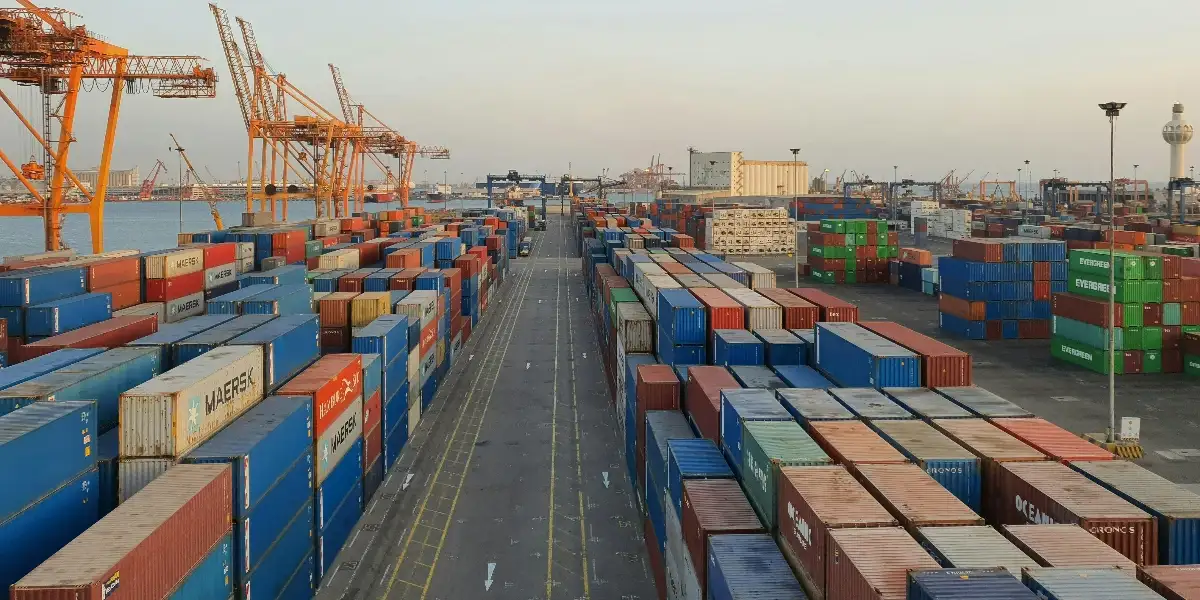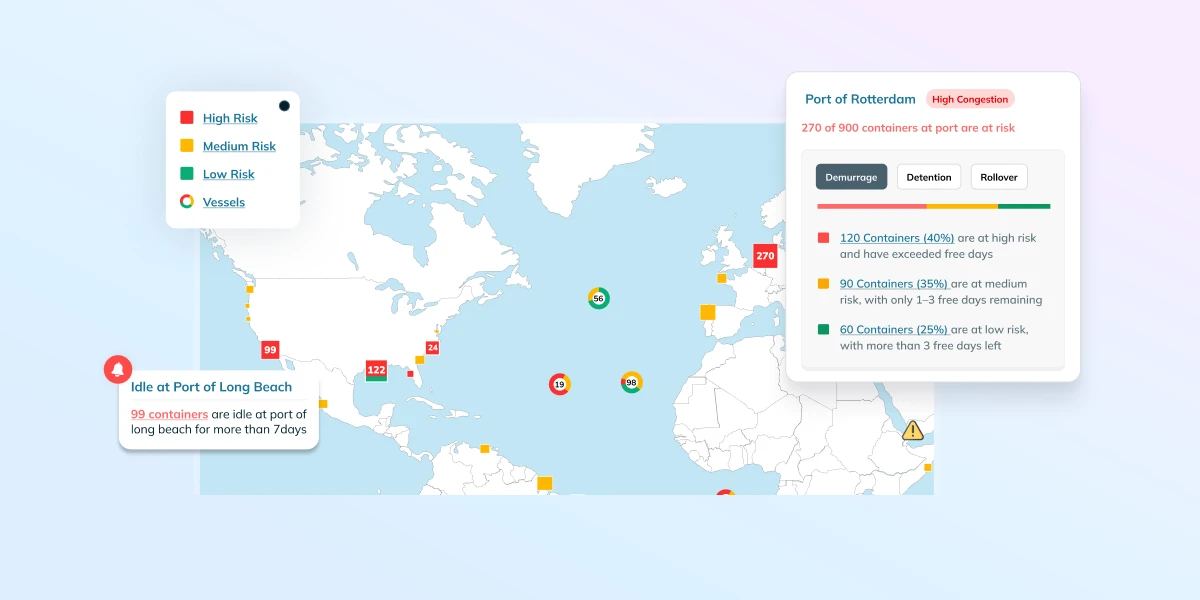For a long period of time, supply chain visibility and digitizing supply chains were viewed as a “nice-to-have” rather than an essential feature in building supply chain resiliency. According to a McKinsey report, 48% of container ships are more than 12 hours behind schedule on average. Without real-time visibility of shipments, manufacturers are likely to experience delays in receiving supplies and shipping out the end product to customers.
And in a more recent conducted by the Institute For Supply Management (ISM), nearly 75% of the companies surveyed had their supply chain disrupted because of COVID-19. Of this group, 16% expect to adjust revenue targets downwards by an average of 5.6%. Furthermore, 53% of the respondents found it difficult getting supply chain information from China. For context, this survey was carried out in March 2020, when the virus was yet to be contained in China.
Before COVID-19, these delays resulted in lower customer satisfaction levels, an increase in supply chain costs due to the need for buffer inventory and additional detention & demurrage charges. The COVID-19 pandemic has exacerbated these negative impacts to the extent where investing in supply chain visibility becomes a necessity for manufacturers to remain competitive.
By combining real-time data with machine learning, predictive analytics provides the manufacturer with greater visibility on their supply chain, proactive alerts when shipments may be stuck or delayed and predictive information on arrival times.
Based on this dynamic, real-time visibility, the manufacturer is able to make proactive adjustments to the supply chain, reduce supply chain costs especially Detention & Demurrage charges and drive better customer satisfaction and OTIF performance.
In this article, we dive into the 3 ways in which supply chain visibility benefits the manufacturer.
Improve Customer Satisfaction Levels
Customers are increasingly expecting “Amazon-level” service levels in terms of receiving their purchase on-time, as global delivery networks become more mature. Constant delays may lead to customer attrition, reduced revenues and a damaged brand reputation for the manufacturer.
The COVID-19 pandemic has disrupted the supply chain distribution of manufacturers, leading to more delays compared to last year. In the ISM survey, 57% of the respondents reported longer lead times for tier-1 components from China, with average lead times more than doubling compared to the end of 2019.
Without supply chain visibility, manufacturers are not able to make adjustments to mitigate the increasing occurrence of delays. By investing in supply chain visibility, manufacturers will have proactive alerts on when shipments will be delayed or facing rollovers or vessel change. This is crucial to reduce the occurrence of delays and improve customer satisfaction levels.
For example, a smartphone manufacturer has shipped the camera lens of a phone to the manufacturing plant. The company is then notified at least 5.6 days earlier than the carrier (using Portcast Real-Time Visibility Platform) of an expected container delay based on various external factors. These factors may be attributed to weather, delay in previous ports and location based tracking of the vessel etc.
This allows the manufacturer enough time to plan the downstream supply chain, arrange for the truck to reach just-in-time, reduce accidental port charges and notify the factory of the delay.
This means that a) there is greater on-time reliability in advance and b) if the cargo is not on-time, there are proactive alerts and the time to react to the changes in distribution., Thus enabling customer satisfaction levels to improve.
Reduce Detention & Demurrage and Inventory Costs
With existing static supply chain data, manufacturers do not have reliable information on container movements in ports e.g. how many days past the free days is the container staying within the port or outside the port. This leads to significant demurrage and detention costs incurred by manufacturers annually. Relying on data from carriers has been delayed or incomplete to get total visibility on D&D costs.
According to Maersk’s 2018 annual report, USD $938 million of “Other Income” in Q4 were “mainly driven by higher demurrage and detention”. With the waiver period granted to shippers being gradually shortened each year, detention and demurrage costs are set to increase.
To put this cost into perspective, FIATA (The International Federation of Freight Forwarders Association) has reported that demurrage and detention costs 20 times more than the container itself.
Furthermore, with unreliable vessel schedules, manufacturers have to keep buffer stocks in their warehouses in the event of a delay to incoming shipments. According to a report by Bamboo Rose, more than 56% of shippers hold a minimum of 3 weeks of goods to compensate for lack of supply chain visibility.
Investing in supply chain visibility will allow the manufacturer to accurately estimate the time it takes for shipments to arrive. Predictions can be done at a granular level e.g. specific shipping routes and between two specific ports.
By being notified of port delays in advance, manufacturers can inform warehouses and truckers to make changes to the initial schedule. This will significantly reduce detention charges.
Quantifying expected delays in ports and customs clearance, manufacturers are able to more accurately forecast detention and demurrage costs, reducing the unknown costs.
Based on the prediction of shipment arrival times, manufacturers are also able to accurately decide on the optimal level of buffer stocks needed to be stored in the warehouse.
For example, based on carrier information only, a car manufacturer wants to keep 3 weeks of buffer stocks for windshields. After investing in supply chain visibility technology, the car manufacturer receives more accurate arrival times of incoming shipments for windshields.
Based on this information, the manufacturer can reduce buffer stocks by almost one week as well as the amount of warehouse space needed, significantly reducing the costs incurred for this manufacturer.
Unbiased Shipping Carriers Performance Metrics
In most cases, manufacturers have assessed shipping lines and freight forwarders solely based on pricing. However, cost should not be the only basis of comparison, as on-time reliability of shipping lines is crucial to a manufacturer’s supply chain as well.
In addition to predicting the arrival times of shipments, supply chain visibility platforms provide manufacturers with unbiased performance metrics of the shipping carriers, ports and lanes utilized. This allows the manufacturer to assess shipping lines based on their expected on-time reliability at specific shipping lanes and when transporting between particular ports.
As shared previously, shipment delays incur financial costs to manufacturers as well and should be used as a criteria when selecting a shipping line or freight forwarder.







